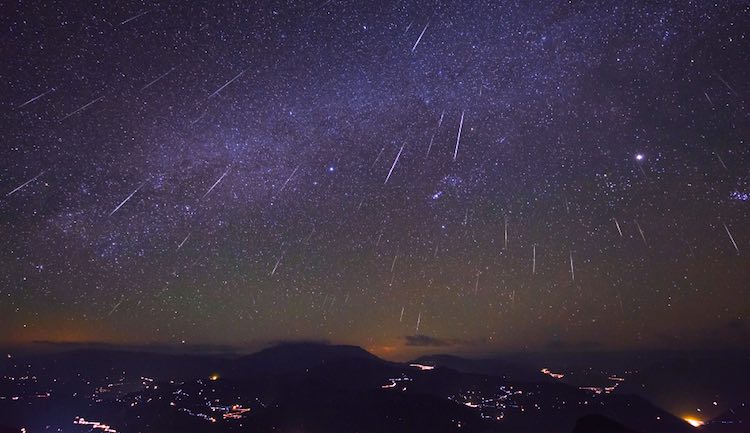
If you don’t mind the nip of the cold, this month’s celestial phenomena are ones to watch, and include a Nutcracker ballet between the Moon and Mars, and the king of the meteor showers.
Mars is at its brightest this December between the 7th and 8th, when an occultation occurs. This is the passing of the Moon directly across Mars, and will take place between late night on the 7th and early morning on the 8th, depending on your location.
The Griffith Observatory in California will be streaming the celestial event.
Mars will also partake in a pas de deux with the Sun when on the night of the 8th, the Red Planet will be perfectly framed with the light of the sun passing around the Earth. The surface details of Mars will be visible with telescopes and binoculars on this night.
Orbiting back to the Moon, it will be full on the 8th of December, and is the last full-moon of autumn.
The full moon this month is known as the Cold Moon, for obvious reasons. The Old Farmer’s Almanac has collected the traditional names for moons from the Native Americans, and they are as follows: Drift Clearing Moon (Cree) Frost Exploding Trees Moon (Cree), Moon of the Popping Trees (Oglala), Hoar Frost Moon (Cree), Snow Moon (Haida, Cherokee), Winter Maker Moon (Western Abenaki), Moon When the Deer Shed Their Antlers (Dakota), Little Spirit Moon (Anishinaabe), and Long Night Moon (Mohican).
Also in December is the Winter Solstice, the last day of autumn and the longest night of the year.
On that same night there will be a good time to see Mercury, as it rises to its highest point in the sky this year, and farthest away from sunset.
Between December 7th and the 17th, the Geminid Meteor Shower will pelt the sky with 120 multi-colored streamers per night with peak pelting occuring between the 13th and the 14th.
Between the 17th and Christmas, one can also see the Ursid Meteor Shower, which is less spectacular and more for meteor junkies and the hipster-class of celestial phenomenon viewers.
Meteor showers were named once upon a time after the constellation from which they appear to originate from—the Geminids from Gemini, and the Ursids from Ursa the Bear.
Look to the east around 2:00 AM to see the Geminids at peak, and the North to see the Ursids—the New Moon on December 23rd will offer the best chance to see this sparser showing.
SHARE This Stargazing Schedule With Your Friends…



















